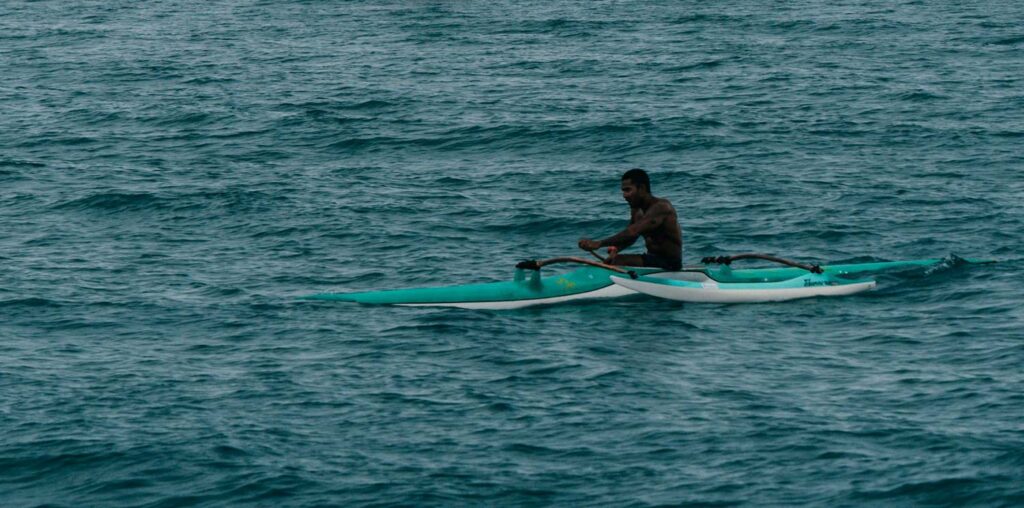When it comes to kayaking, one of the most common questions is: How deep does the water need to be? You’re not the only one curious about this, and the answer isn’t as straightforward as you might think. The depth of the water can make all the difference between an enjoyable kayaking experience and a potentially unsafe one. Let’s break it down bit by bit so that next time you head out on the water, you’ll feel confident that you know what to expect.
First off, the depth needed depends on the type of kayaking you’re doing. If you’re just floating through a calm lake or gentle river, you don’t need much depth. For a standard recreational kayak, even six inches of water might be enough in some cases. But keep in mind that this will vary based on the size of the kayak, your weight, and the cargo you’re carrying. You want to make sure that the kayak isn’t scraping the bottom or getting stuck on rocks or other debris.
Shallow water, though, comes with its own risks. If you’re paddling through water that’s less than a foot deep, you’re more likely to run into obstacles such as rocks, branches, or debris. It’s easy to tip over if your kayak suddenly gets stuck or hits something submerged. Plus, constantly hitting the bottom can damage your kayak over time, especially if it’s a rigid one.
When kayaking in rivers, the situation changes. If you’re paddling down a stream or river, you’re dealing with water that might be shallow in some areas and deep in others. For whitewater kayaking, it’s better to be in water that’s at least 3 feet deep. Fast-moving water can have hidden rocks and unexpected drops, and you don’t want your kayak’s bottom scraping against those. Plus, if you capsize, deeper water gives you more space to right yourself or swim to safety.
That said, depth isn’t the only factor to consider when planning your trip. Water clarity and flow also matter. You could be in deep water, but if it’s murky, you might not see obstacles beneath the surface. Moreover, in fast-moving water, like rapids, even if it’s relatively shallow, the force of the current can make it more dangerous than a deep, calm lake.
The width of your kayak can affect the minimum water depth as well. A wide kayak displaces more water, which means it can float in shallower waters compared to a narrower, more streamlined model. This is why fishing kayaks, which are often wider, can often float in very shallow water. However, keep in mind that while they can float, maneuvering in such conditions may still be difficult.
Another thing worth thinking about is the impact of tides. In coastal areas, tidal changes can significantly affect water depth. You could launch your kayak into a bay that seems deep enough at high tide, only to find yourself stuck in mud when the tide recedes. In these environments, planning ahead and knowing the tide schedule is essential. Tide charts provided by government agencies are usually reliable and can be checked online before you head out.
If you’re kayaking in a national park or a protected wildlife area, you might need to abide by specific rules about water depth. For example, some parks don’t allow kayaks in waters less than a certain depth to protect delicate ecosystems. Certain plants, animals, or coral reefs can be damaged by kayak paddles or the kayaks themselves. Be mindful of the regulations in any area where you kayak to avoid potential fines or other penalties.
Some lakes and rivers also undergo seasonal changes in water level, depending on rainfall or drought conditions. In low water seasons, areas that were previously good for kayaking might become too shallow, while rainy seasons can make previously shallow streams deep enough for an exciting adventure. So, check the current conditions before making plans, especially in natural areas. Government sites and local resources are great for up-to-date water conditions.
For those getting into sea kayaking, depth becomes a more complex issue. The ocean’s depth won’t affect your ability to kayak on the surface, but the conditions created by the depth will. Shallow areas near the shore, for example, are where waves break, so you’ll need to watch out for surf that can capsize your kayak. Deeper waters, on the other hand, usually mean fewer waves close to shore but stronger currents farther out. This is important to keep in mind if you’re considering coastal kayaking trips.
One thing to consider too is how depth interacts with your own safety gear. If you’re in water that’s too shallow, your paddle may end up hitting the bottom too often, which reduces your control over the kayak. But if you flip in deeper waters, your life jacket (which you should always wear) needs to be in good condition. It should help you stay afloat, no matter the depth.
Ultimately, there’s no one-size-fits-all answer to how deep the water needs to be for kayaking. Factors like the type of kayak, the water’s speed and clarity, local regulations, tides, and your paddling experience all come into play. However, a good rule of thumb is to aim for water that’s at least as deep as your kayak’s draft (the part of the boat below the waterline). That way, you won’t constantly scrape the bottom, and you’ll have a safer and smoother experience.
So, always check the water conditions before heading out. Plan ahead, know the depth, and enjoy the ride!

